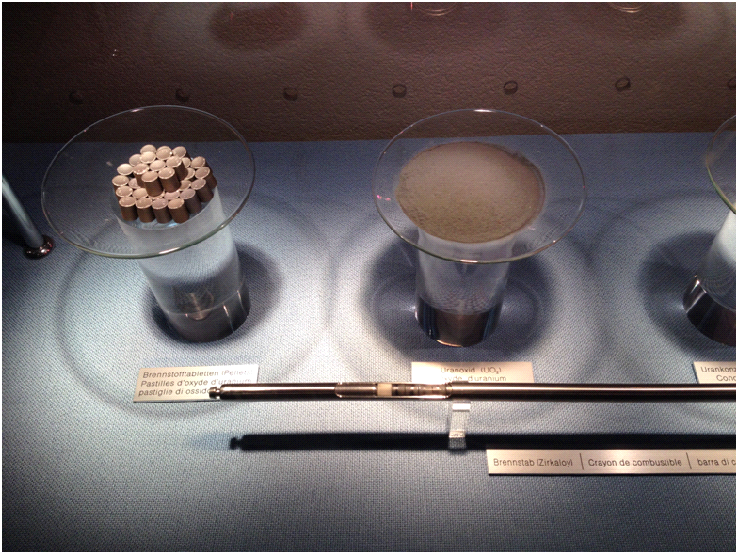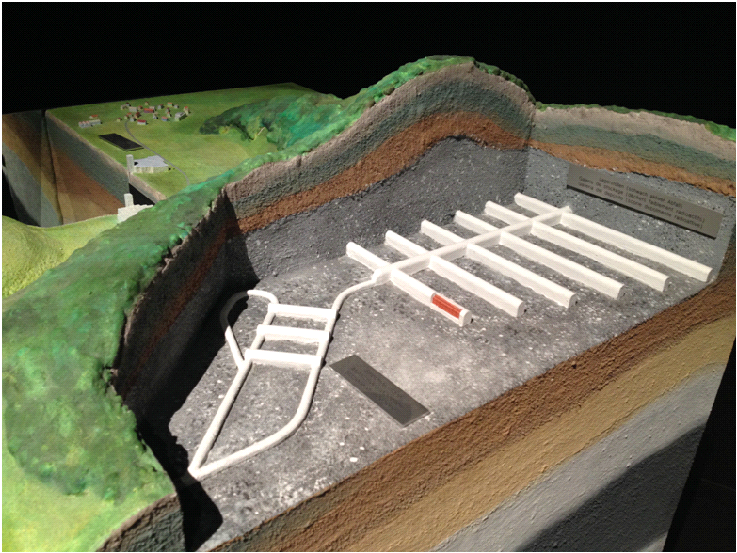On November 18th 2013, the LMS group visited the nuclear power plant of Gösgen. The plant is one of the five nuclear stations in Switzerland and is situated in the city of Däniken in the canton of Solothurn. During the visit, the functioning of the nuclear power plant has been illustrated in all its components focusing in particular on the role of the reactor, the cooling tower and, the safety precautions. The issue of the disposal of radioactive waste has been also addressed, showing how deep geological repositories can be considered as the best way to store the nuclear waste. This topic is currently under investigation by the LMS group.
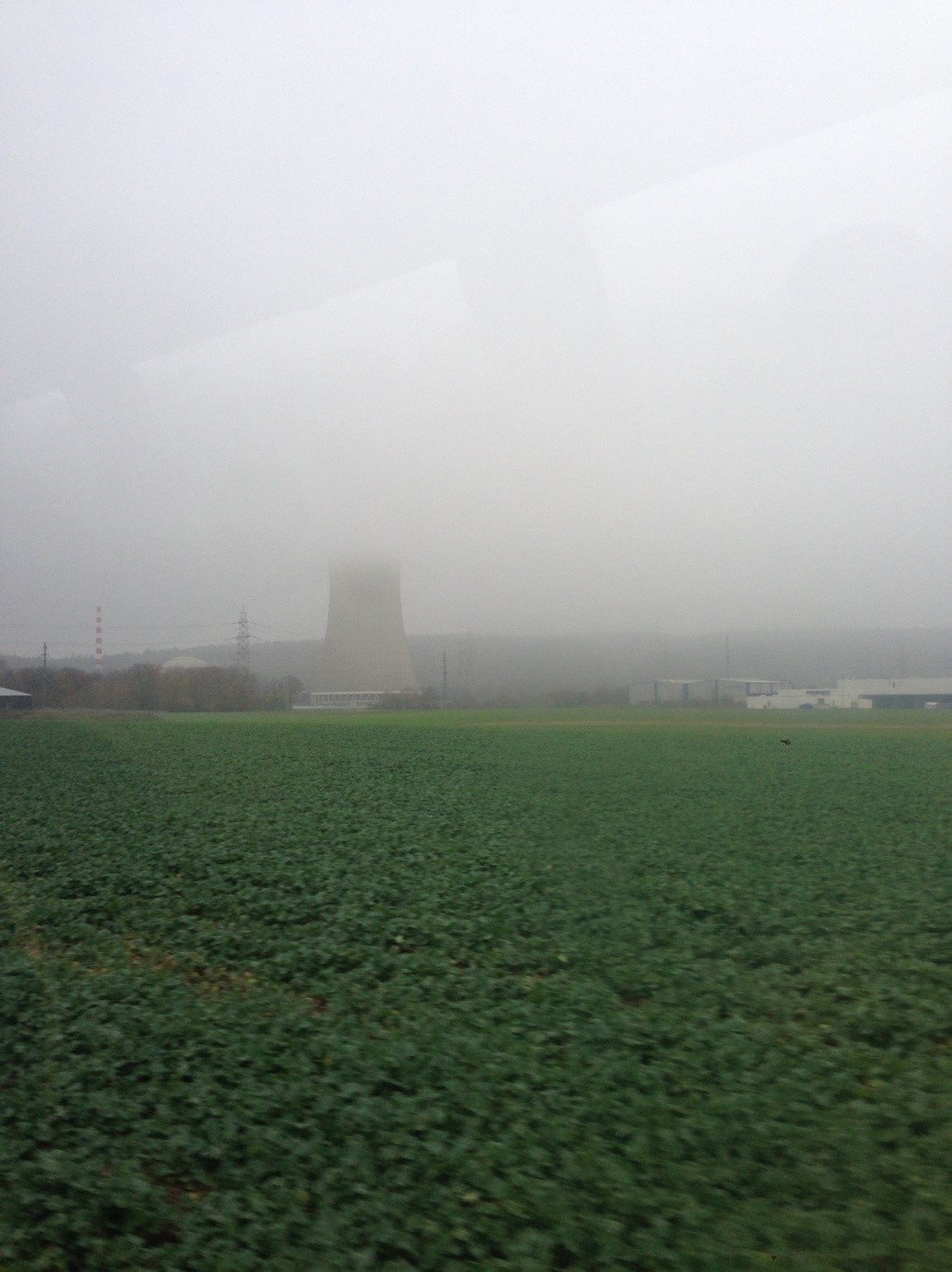
Gösgen nuclear power plant
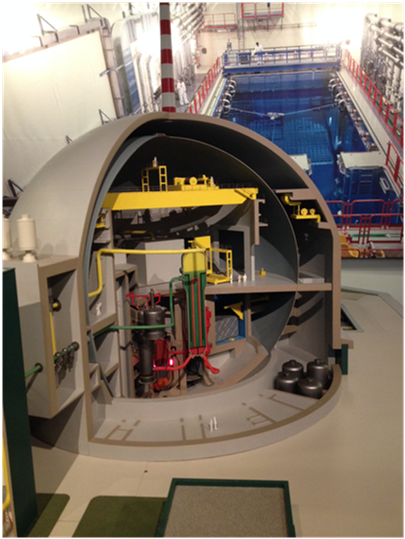
Model of the reactor pressure vessel containing the reactor core
Pellets of uranium dioxide enclosed in a gas-tight and pressure resistant welded zircaloy tube
The Gösgen nuclear station has a net capacity of 958 MW with an annual production of electricity 8,074 GWh (last data recoded in 2012). The water pressurized reactor is composed of 177 fuel assemblies, and each of them can hold up to 205 rods. Each rod is filled with a column of fuel pellets which are made of sintered uranium dioxide containing enriched fissile uranium – 235. The total number of rods in the reactor is more than 3600 and it corresponds to an equivalent fuel pellet column length of around 130 km. The reactor in operation can contain up to 76 tons of fuel.
The reactor works at 324 °C of temperature and at 153 bar of pressure. The hot water produced is then transformed in steam at a temperature of 284 °C and a pressure of 64 bar which is sent to three turbines to create electricity. Approximately 5900 tons of steam are sent to the turbines group each hour to produce electricity. The electricity produced by the nuclear power plant of Gösgen covers 15% of Switzerland’s electricity requirements. The cost of electricity decreased from 6.30 cents/kWh in 1980 to 3.98 cents/kWh in 2011, and this price includes also the cost for the future disposal of the radioactive waste.
Regarding the disposal of the high-level radioactive waste, long-term studies and investigations have confirmed the feasibility to store nuclear waste in deep geological formation in a permanent and safe way. In 2008, the Federal Council has approved a procedure to identify the sites for deep geological repositories.
Model of the repository located in deep geological formation for low-level and intermediate-level radioactive nuclear waste.
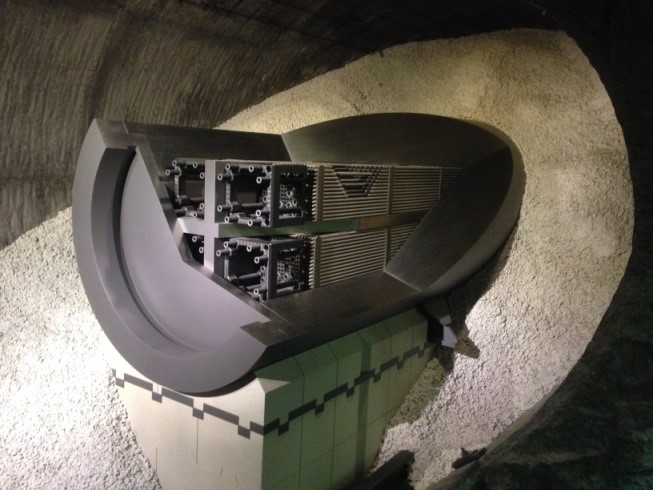
Real scale model of a canister containing high-level radioactive nuclear waste stored in deep clay geological formation.
For more information visit the website http://www.kkg.ch.


